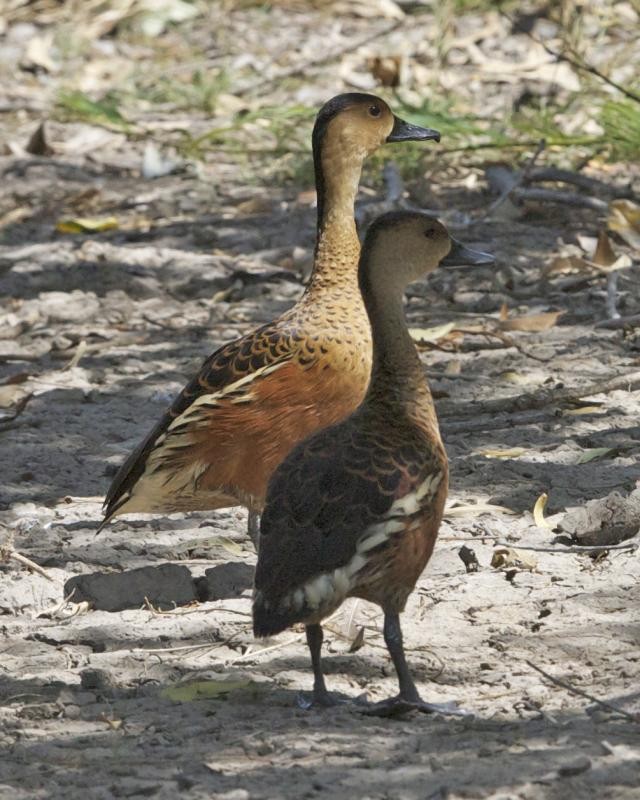Wandering Whistling Duck
A species of Whistling-ducks Scientific name : Dendrocygna arcuata Genus : Whistling-ducks
Wandering Whistling Duck, A species of Whistling-ducks
Botanical name: Dendrocygna arcuata
Genus: Whistling-ducks
Content
Description General Info
 Photo By Lip Kee Yap , used under CC-BY-SA-2.0 /Cropped and compressed from original
Photo By Lip Kee Yap , used under CC-BY-SA-2.0 /Cropped and compressed from original Description
Formerly named tree ducks, the wandering whistling duck has its new name because of their loud whistling calls and the whistling noise their wings make during flight. They have long necks and legs and look like a cross between a goose and a duck. They have a strong head and neck with a darker crown and hindneck. The breast contains black spotting and the feathers are mostly dark brown. They range in size from 54–60 cm in height and weigh on average 750 grams. They mainly feed on grasses, waterlilies, water plants and occasionally insects and aquatic vertebrae. 
Size
45 cm
Nest Placement
Ground
Feeding Habits
Wandering Whistling Duck predominantly feeds on aquatic vegetation like water lilies and sedges, favoring diving and dabbling methods. They mostly forage at night in Australia, occasionally forming mixed-species flocks.
Habitat
Wandering Whistling Duck typically inhabits wetland ecosystems, favoring bodies of relatively deep freshwater such as floodplain lakes, lagoons, and rivers that support emergent vegetation. These regions often include flooded grasslands and dam areas, providing the semi-aquatic conditions that wandering Whistling Duck prefers for foraging and breeding. The species is distributed across broad tropical and subtropical regions, thriving in areas where water is a permanent feature and allows them to swim and dive proficiently.
Dite type
Herbivorous
General Info
Feeding Habits
Bird food type
Species Status
Not globally threatened.
Scientific Classification
Phylum
Chordates Class
Birds Order
Waterfowl Family
Geese Genus
Whistling-ducks Species
Wandering Whistling Duck